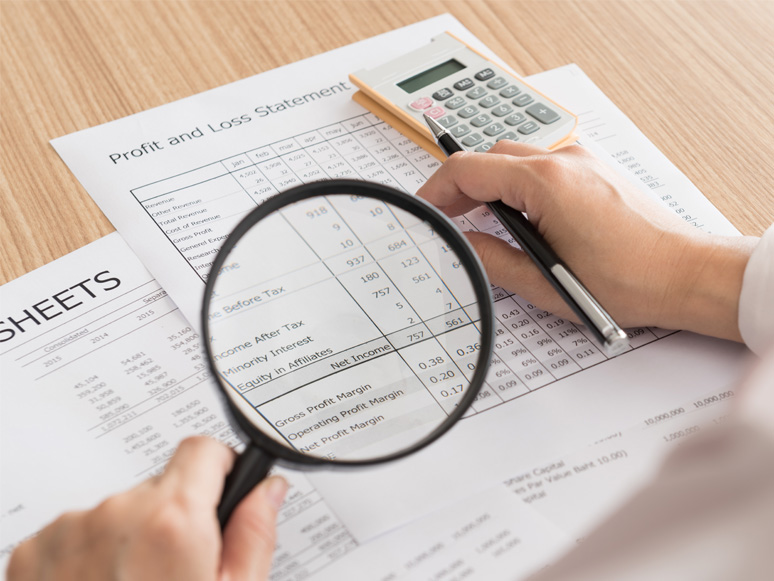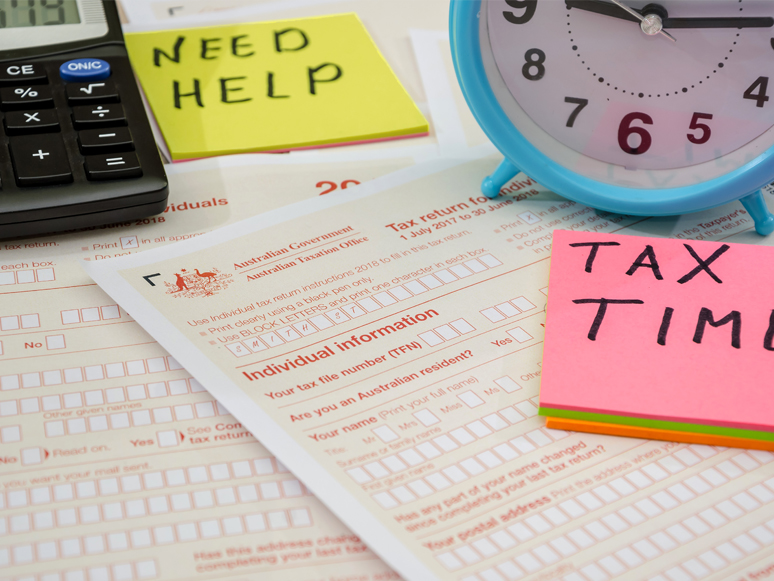logo


01st Jul, 2021

The Federal Government has announced a temporary COVID Disaster Payment to assist workers who live or work in a Commonwealth declared hotspot, who are unable to attend work and earn an income as a result of state-imposed health restrictions that last for longer than one week.
The payment, available for Australian citizens, permanent residents and eligible working visa holders, is up to $500 per week for recipients who lose 20 hours or more of work, and $325 per week those who lose under 20 hours of work.
Access to the payment is available through Services Australia from 8 June 2021.
01st Jul, 2021

Is your private health insurance getting more expensive every year? Part of the reason could be that the government has once again introduced legislation to freeze the related income thresholds, which were originally meant to be indexed with inflation on 1 April each year.
While the government likes to blame the funds for hikes adding to the cost of living, the reality is that the income thresholds for the private health insurance incentive have also not been indexed to keep pace with inflation since the 2014–2015 income year, and the rebate percentage is staying the same this year as for the 2019–2020 income year.
Most people with private health insurance take the private health insurance incentive in the form of reduced premiums on their cover, although it can also be taken as a tax offset.
For individuals and families with private health insurance, the rebate adjustment factor remaining the same as in the 2019–2020 income year will translate into a real-life cut in the rebated amount.
For example, private health insurance for basic (Bronze) hospital cover plus extras for two adults and two young children ranges from $300 to $600 per month. At an average figure of $450 per month, the annual cost of the insurance would equate to roughly $5,400. Assuming the adults are under 65 and earning less than $180,000 as a family, the total rebate on the yearly premium would be $1,354.
If the family applies the rebate to reduce the premiums for their cover, instead of paying $450 per month they would pay $337 per month. However, because indexation is now frozen until 1 July 2023, if private health insurance prices increase next year in line with previous average increases, the same family earning the same amount of money will end up paying more for their private health insurance, because the rebate percentage will stay the same.
The average 2021 price increase for health insurance premiums was 2.74%, the lowest increase since 2001. However, most large insurers increased their prices more, with the maximum increase by a fund listed as 5.47%. According to some figures, health insurance premiums have increased by 57% in the last decade, while the consumer price index (CPI, or inflation) has only grown by 20%.
Extending from our example, if the average price of $450 per month increases by 5% for 2022, the family will pay $22 extra per month before the rebate is applied. The total annual premium would be $5,670 and the total rebate on the yearly premium would be $1,420.
Again, if the family applies the rebate to reduce their premiums, they will end up paying $354 per month in 2022, which equates to $17 a month extra for the same policy with the same benefits, while they are earning substantially the same amount due to stagnant wages growth.
01st Jul, 2021

Over 600,000 Australian taxpayers have invested in crypto-assets in recent years. The ATO has recently issued a reminder that although many people may believe that gains made through cryptocurrency trading are tax-free, or only taxable when the holdings are cashed back into “real” Australian dollars, this is not the case – capital gains tax (CGT) does apply to crypto-asset gains or losses.
While it may appear that cryptocurrencies operate in an anonymous digital world, the ATO does closely track where these assets interact with the “real” financial world through data from banks, financial institutions and cryptocurrency online exchanges, following the money back to the taxpayer.
This year the ATO will write to around 100,000 people with cryptocurrency assets explaining their tax obligations and urging them to review their previously lodged returns. It also expects to prompt 300,000 taxpayers to report their cryptocurrency capital gains or losses as they lodge their 2021 tax returns.
Alongside these communications, the ATO is beginning a new data-matching program focused on crypto-asset transactions. It will acquire account identification and transaction data from cryptocurrency designated service providers for the 2021 financial year through to the 2023 financial year inclusively. The ATO estimates that the records relating to approximately 400,000 to 600,000 individuals will be obtained each financial year.
01st Jul, 2021

Businesses that have accessed government economic stimulus measures need to take extra care this tax time. The ATO has announced that it will increase its scrutiny, conducting compliance activity on various economic stimulus measures introduced to help businesses recover from the effects of COVID-19.
These stimulus measures include loss carry-back, temporary full expensing and accelerated depreciation.
While the ATO will continue to support businesses, most of whom are doing the right thing, it is looking at behaviour or development of schemes designed to deliberately exploit various stimulus measures. All taxpayers who’ve used the schemes should review their claims to ensure they are eligible, and that the amounts claimed are correct.
The loss carry-back measure allows eligible corporate entities to claim a refundable tax offset in their 2020– 2021 and 2021–2022 company tax returns. In essence, companies get to “carry back” losses to earlier years in which there were income tax liabilities, which may result in a cash refund or a reduced tax liability.
The temporary full expensing measure allows immediately deducting the business portion of the cost of eligible new depreciating assets or improvements. Eligible businesses also have access to the accelerated depreciation measure for the 2019–2020 and 2020–2021 income years, in which the cost of new depreciating assets can be deducted at an accelerated rate.
The ATO will review claims as part of its tax time compliance activities as well as actively identifying tax schemes and arrangements seeking to exploit those schemes. The ATO will actively pursue concerning or fraudulent behaviours, including imposing financial penalties, prosecution and imprisonment for the most serious of cases.
01st Jul, 2021

Would you like to hold a wine collection, artworks, or a classic car in your self managed superannuation fund (SMSF)? Well, you can if you follow some strict rules.
Firstly, the investment in collectibles or personal use assets must be for genuine retirement purposes and not to provide any present day benefit to either the members of the SMSF or related parties. Secondly, the assets cannot be used by members or related parties in any capacity. Thirdly, the asset must be insured in the fund’s name within seven days of acquisition. All of these requirements, plus other rules, need to be met to avoid falling afoul of super rules.
This means that whatever collectable or personal use asset your SMSF purchases, it can’t be used by members or related parties in any capacity. Consider a classic car: if it is owned by the SMSF as an investment, it cannot be driven by a member or any related party for any reason. This holds true even if the only reason for driving the car is to maintain it or to perform restoration work.
The rules also mean that any collectable or personal use asset owned by your SMSF can’t be stored at the private residence of any member or related party.
However, the asset can be stored – not displayed – in non-private-residence premises owned by a related party. For example, an artwork can’t be displayed in the business premises of a related party where it would be visible to clients and employees, but it could be stored in a cupboard. It could also be leased to unrelated parties on arm’s length terms.
The ability to insure must also be considered where your SMSF is investing in collectables or personal use assets. The items must be insured within seven days, under either separate policies or one collective policy. The owner and beneficiary of the policy must be the SMSF itself. If the SMSF has already made the investment but cannot to obtain insurance, the ATO must be notified.
20th May, 2021

In the Budget, the Government did not announce any personal tax rates changes, having already brought forward the Stage 2 tax rates to 1 July 2020 in the October 2020 Budget. The Stage 3 tax changes will commence from 1 July 2024, as previously legislated.
The 2021–2022 tax rates and income thresholds for residents are therefore unchanged from 2020–2021:
Stage 3: from 2024–2025
The Stage 3 tax changes will commence from 1 July 2024, as previously legislated. From 1 July 2024, the 32.5% marginal tax rate will be cut to 30% for one big tax bracket between $45,000 and $200,000. This will more closely align the middle tax bracket of the personal income tax system with corporate tax rates. The 37% tax bracket will be entirely abolished at this time.
Therefore, from 1 July 2024, there will only be three personal income tax rates: 19%, 30% and 45%. From 1 July 2024, taxpayers earning between $45,000 and $200,000 will face a marginal tax rate of 30%. With these changes, around 94% of Australian taxpayers are projected to face a marginal tax rate of 30% or less.
Low and middle income tax offset
The Government also announced in the Budget that the low and middle income tax offset (LMITO) will continue to apply for the 2021–2022 income year. The LMITO was otherwise legislated to only apply until the end of the 2020–2021 income year, meaning low-to-middle income earners would have seen lower tax refunds in 2022.
The amount of the LMITO is $255 for taxpayers with a taxable income of $37,000 or less. Between $37,000 and $48,000, the value of LMITO increases at a rate of 7.5 cents per dollar to the maximum amount of $1,080. Taxpayers with taxable incomes from $48,000 to $90,000 are eligible for the maximum LMITO of $1,080. From $90,001 to $126,000, LMITO phases out at a rate of 3 cents per dollar.
Consistent with current arrangements, the LMITO will be received on assessment after individuals lodge their tax returns for the 2021–22 income year.
Low income tax offset
The low income tax offset (LITO) will also continue to apply for the 2021–2022 income year. The LITO was intended to replace the former low income and low and middle income tax offsets from 2022–2023, but the new LITO was brought forward in the 2020 Budget to apply from the 2020–2021 income year.
The maximum amount of the LITO is $700. The LITO will be withdrawn at a rate of 5 cents per dollar between taxable incomes of $37,500 and $45,000, and then at a rate of 1.5 cents per dollar between taxable incomes of $45,000 and $66,667.
The Government will remove the exclusion of the first $250 of deductions for prescribed courses of education. The first $250 of a prescribed course of education expense is currently not deductible.
Background
A limitation on deductibility exists under s 82A of the Income Tax Assessment Act 1936 (ITAA 1936) regarding deductions that would otherwise be allowable under s 8-1 if the self-education expenses are necessarily incurred for or in connection with a course of education provided by a place of education (eg a school, uni, college, etc) and undertaken by the taxpayer for the purpose of gaining qualifications for use in the carrying on of a profession, business or trade or in the course of any employment.
In those circumstances, currently only the excess over $250 may be deductible.
The Government will replace the existing tests for the tax residency of individuals with a primary “bright line” test under which a person who is physically present in Australia for 183 days or more in any income year will be an Australian tax resident.
People who do not meet the primary test will be subject to secondary tests that depend on a combination of physical presence and measurable, objective criteria.
The new residency rules are based on recommendations made by the Board of Taxation in its 2019 report Reforming individual tax residency rules: a model for modernisation.
The Budget confirmed that the Government will make an additional $1.7 billion investment in child care. The changes will commence on 1 July 2022 (that is, not in the next financial year). This measure was previously announced on 2 May 2021.
Commencing on 1 July 2022, the Government will: